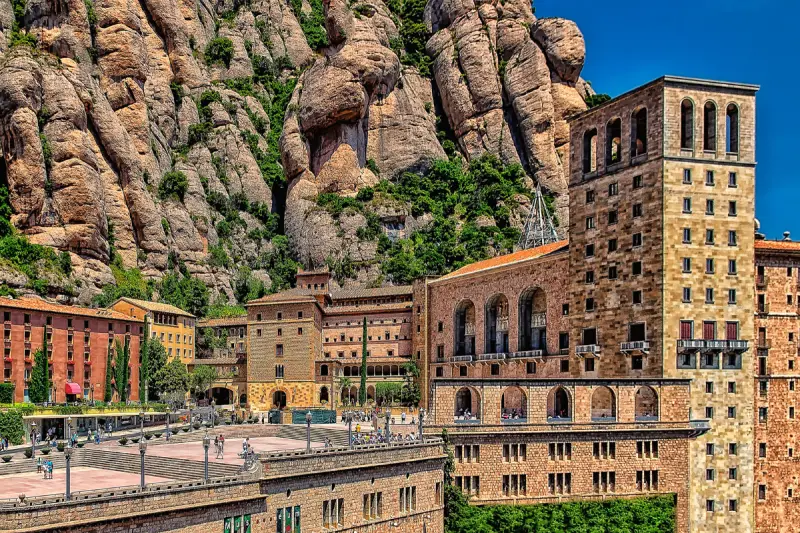Germany Regional Travel Guide: Germany is a Western European country with a landscape of forests, rivers, mountain ranges, and the North Sea beaches. It has over 2 thousand years of history. Berlin, its capital, is home to art and nightlife scenes, the Brandenburg Gate and many sites relating to WWII. Munich is known for its Oktoberfest and beer halls, including the 16th-century Hofbräuhaus. Frankfurt, with its skyscrapers, has the European Central Bank.
- It is estimated that the average German consumes around 140 liters of beer per year.
- Frederick the Great of Prussia loved beer so much that he banned coffee in 1777.
- The drinking age in Germany for hard liquor is 18 while for beer it’s 16.
- Germany’s National Football Team remains one of the strongest, having won a total of four World Cups.
- Bread is one of the main foods part of every cuisine in Germany.
- Sausages, called Wurts in Germany, are made of pork, beef or veal and flavored in different ways depending on the region.
- Middle Age castles and palaces built by the European nobility are among the most important buildings in German architectural history.
- Germany is home to a great number of cathedrals and monuments that date back to the BC era.
- Oktoberfest is the World’s largest and one of the oldest beer and travel funfair festivals.
- In Germany education is free even for internationals.
Do U.S. Citizens Need A Visa for Germany
U.S. citizens do not need a visa to enter Germany, which simplifies entry into the country; however, a passport valid for at least six months past the planned date of departure is required.
BERLIN
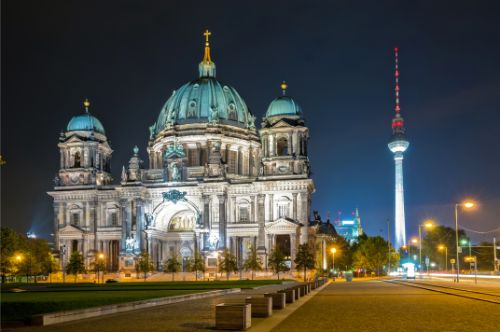
It’s easy to see why Germany’s buzzing and largest city, Berlin, attracts tourists. It is productive, with increasingly more and more buildings being erected or replacing older ones. The architecture and cityscape create a whimsical atmosphere, cracking with creativity and extensive beautiful, meaningful, and tasteful graffiti. The Berlin efficiency creates a distinctly memorizing effect against the calm, marshy lowlands that makes up the rest of the state of Brandenburg. Brandenburg’s small country towns, empty historic churches, decaying Gothic monasteries, and wilting palaces give evidence of the fading memory of Prussian history.
As regenerative forces renew aging parts of Berlin, the city begins to slow to a calmer, smoother pace. The brandishes and bruises of the 20th century have been patched, allowing for a fusion of modern creations and cultural delights within the monuments and museums and jungle of cranes. However, not all has been diminished and replaced. Landmarks and reminders of the city’s story have been left to continue Berlin’s tale.
But it isn’t all history and high culture that brings Berlin to life. It is the city’s vibrancy that seems into every corner of the area, inciting fresh, challenging, and sometimes delightfully odd events. Every year tops the previous, with a more international, inviting, and cosmopolitan atmosphere.
POTSDAM
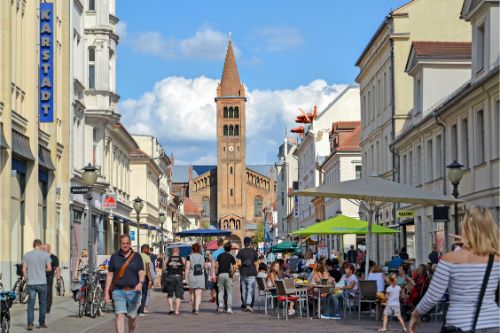
Berlin, however, is not the capital of Brandenburg. That title is left to Potsdam, a provincial city whose attractiveness lays in its palaces, gardens, royal piles and follies. Generations of Hohenzollerns put their favor into the city, allowing for its size to double with their aesthetic additions. A definite addition to The Germany Regional Travel Guide.
Potsdam provides a calm break from the hustle and bustle of Berlin, making it not only capital in name but in pacing, of the matching sleepy hinterland of Brandenburg. To fully enjoy the tranquility of the countryside, workday cities such as Brandenburg an der Havel, Frankfurt an der Oder, and Cottbus. Instead, visitors enjoy the meandering, flat, tree-lined country roads that weave through beech forests, golden rapeseed and sunflower fields, and heathland. This tapestry is woven together by a lacework of rivers, lakes, canals, and other waterways.
SAXONY
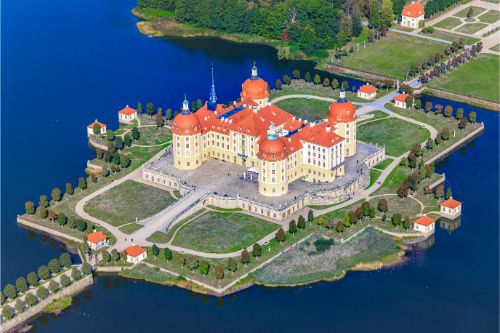
Once a Saxon state, Saxony is making its comeback after decades of stagnation. The German Democratic Republic (GDR) once stifled Dresden, Leipzig and Chemnitz, its three largest cities outside of the capital. So determined was the GDR that it attempted to recreate a ‘Mother Russia’ within Chemnitz. However, these days the remerging Baroque city of Dresden has been restored, creating a cultural sensation. Leipzig has regained its vibrancy, outshining other cities in its dynamic art scene and in trade. Of all the Eastern German states to benefit from reunification (outside of Berlin), Saxony has benefitted the most.
Saxony promotes itself well, boasting to be the State of Arts, a title it can afford after securing its economy. Baroque musician, Johann Sebastian Bach, spent half his life in the area of Saxony. The area also brought to fruition the talents of Robert Schumann, and the distinct Saxon landscapes of Switzerland inspired Romantic painter, Caspar David Friedrich. Saxony is also the state that paved the way for porcelain outside Asia and is known for its ebullient Baroque architecture, outshining any others throughout Europe. The attribution goes to the 18th century Saxon Sun King, Augustus the Strong, whose rulership of Saxony produced the artistic powerhouse it’s known to be.
Dresden, the state capital, is proof that Saxony is more than its vibrant history. The bombings of World War II shattered the Baroque city, and since then reunification has worked toward rebuilding and recreating. The result is a bubbling bar and club scene alongside some of the biggest German art blockbusters. While similar in size, Leipzig’s character is a stark contrast to that of Dresden. Once a hub for commerce, the city is finding its footing once again after so many years of recovery. And then there is Chemnitz, where visible evidence of the ‘Karl-Marx-Stadt’ is still apparent. It is worth visiting if for nothing else than its art and radiant, nearby castle.
Small villages are dispersed throughout Saxony, such as Meissen with its charming, cobbled streets. Its appeal is closely followed by Görlitz that lies on the Polish border, and Bautzen—the capital of the indigenous Sorbs. These rural areas provide visceral enjoyments, such as pottery for the crafty in Erzgebirge. For the naturalist who enjoys outdoor walks along the phenomenal cliffs of Saxon Switzerland, vastly the most scenic visit of the state.
SAXONY-ANHALT and the HARZ
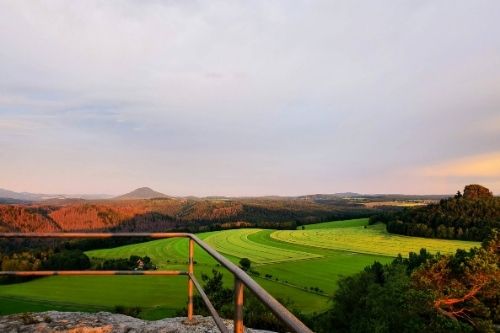
Alternatively spelled Sachsen-Anhalt, Saxony-Anhalt is the division between two landscapes. The sandy plains lie to the east, which is laden with farmlands, pine forests, bogs, and postindustrial cities. The west of this division yields a rise of the gentle Harz mountains where rural villages nestle in green forests. The range straddles the old border that divided East and West Germany, and today still acts as a border between Saxony-Anhalt and Lower Saxony. However, for convenience, both regions will be covered in this section.
The most important industry in this region were the extractive industries, complemented by the large rivers, such as the Elbe and Saale. Many resources were exploited, such as copper, coal, lignite, and forestation, or lumber. While an industrious area, it has also been a battle landing ground, seeking reparations after the Thirty-Year War and World War II. Saxony-Anhalt, however, didn’t form until after WWII. It was the Russians who were occupying the area who formed the former Duchy of Anhalt in combination with the Prussian province, Saxony.
It was only a few years before the area was divided again, though, in the wake of German reunification in 1990, it appointed Magdeburg as the state capital upon its resurrection. The GDR was quick to install and animate industrial production in the area, such as mining and chemical works, though in the following decades the production decreased by more than three quarters. This allowed for more than nine-tenths of employment to be eliminated, creating economic devastation. Since then, the area has stabilized, though is still one of Germany’s poorest states.
The state capital, Magdeburg is comparatively small to other capitals in Germany, though it does boast a historic cathedral as well as urban get-aways with enjoyable nightlife. Traveling north along the Elbe river, the Altmark region is truly rural, where sparsely-populated heathland gives way to a clutch of quiet towns, notably the half-timbered Tangermünde, where the traditions of the area are preserved.
Travelers venturing east of Magdeburg along the Elbe will find an equally rustic experience with the exception of Dessau and Lutherstadt Wittenberg, the latter of which being the birthplace of the 16th-century protestant reformation that divided the Christian church. Dessau is known for its school, whose claim to fame lies in the invention of Modernist architecture and design. Nestled between these two cultural contributions are the English-style country gardens of Wörlitz.
The south of Saxony-Anhalt is driven toward the postindustrial though vibrant university town, Halle. The appeal of Halle lies in its own small-crop attractions, dining, and nightlife. Positioned on the River Salle, the town is downstream from Naumburg whose fame comes from its cathedral and its proximity to Germany’s northern-most wine country: Freyburg. In the foothills of the Harz mountains and to the west of Halle is Lutherstadt Eisleben, the birth and death place of theologian Martin Luther, father of Lutheranism, which is celebrated today.
However, the eastern gateway to the Harz mountains that should be on any traveler’s Eastern German itinerary, is the partially timbered town of Quedlinburg. Using this as a base, it is only a small matter of distance to the foremost mountain adventure. This area is ideal for the outdoors person who enjoys hikes and walks in the summer and tobogganing and both downhill and cross-country skiing in the winter months. The mountain villages and towns cater to the enthusiastic influx and provide note-worthy spas after an enjoyable day of nature. Some of the most remarkable is located on the northern fringes of the mountains in Bad Harzburg and Golsar, which rival Quedlinburg in aesthetic appeal.
The whole area of Saxony-Anhalt is well connected via road and rail, making each location an accessible day trip from Berlin. The Harz caters most enjoyable to those who fancy a chilled excursion on foot, bike, or via its quaint narrow-gauge railways.
THURINGIA
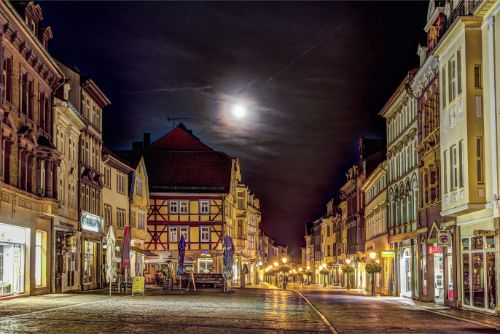
Thuringia (alternatively called, Thüringen) is the geographic and cultural heartland of Germany. When the border between West and East Germany, nicknamed the Iron Curtain, revealed East Germany to the West, a collective sigh of relief met the nation’s so-called ‘green heart,’ spared the social realism implemented by the GDR. It is a place of reminiscence in the minds of many Germans, of a timeless complex. It is a rustic state where life is slow, reflected in travel speeds, and populations are kept low, with no city having more than 200 thousand people.
And yet, it was Thuringia who won out in the competition of cultural esteem. This state is that of theologian Martin Luther, musician Johann Sebastian Bach, and literary emblem Friedrich Schiller, and the state of Goethe. Centered within just a couple hours away from anywhere, Thuringia makes for an optimal tourist destination, with scenic, meandering roads carving through valleys, this rural state is heaven for the relaxed Sunday driver. Leisurely travel has never been such an enjoyable experience.
But truly, the splendor of Thuringia is attributed to its historic value. The area was never large, to begin with, as its ruling house, the Saxon House of Wettin, divided the land between heirs. The area given the name to Thuringia was parceled into small duchies, such as Saxe-Weimar, Saxe-Gotha, and Saxe-Coburg, better known as the House of Windsor. However, these tin-pot fiefdoms allowed for cultural competition, which pinned the reigning dukes of each area against each other to attract the finest painters, philosophers, musicians, and poets into their courts to boast of their magnificence.
Weimar, a Thuringia microcosm, is the aptest display of this competition. It is this fief that roused the German Enlightenment, whose influence rippled through the rest of Europe. Few other small cities could even compare to the influence of this small town.
Running Adjacent to Weimar, Jena has proved its academic traditions worthy, with many students happily partaking in the accompanying nightlife. Gotha and Eisenach, however, both weighing heavily in the culture competition, regardless of their modest sizes. Erfurt, Luther’s university city and the capital of the state is arguably the most underrated capital in Germany, with its academic excellence and historic grandeur backing it.
For the naturist, the Thuringian Forest to the south could not be more unique, centering itself in the state’s core. Sleep villages nestle into the foliage’s folds, ideal for hiking and cycling. One could do worse than to spend a week crossing the area via bike on its many routes through its heart on the 168km Rennsteig. Its scenic aesthetic includes the Saale Valley at the eastern edge of the forest and the uplands on the northside, Kyffhäuser, near the historic spark of the 16th-century Peasants’ War in Mülhausen.
BAVARIA and FRANCONIA
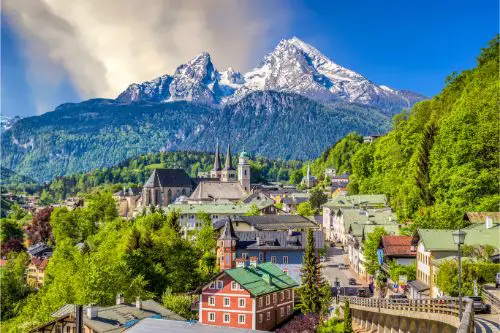
For those expecting the blue and white flags, Weisswurst, and the Alps, coming into Franconia (Franken) can be somewhat discombobulating. This is Bavaria’s most northern region, and it does well to disassociate itself with its popularized characteristics. Franconia brandishes red and white for their colors and boasts of their sausage of choice, the Bratwurst, in the pristine wooden uplands that cover much of the region. Many don’t venture so far up the mountains, never mind foreign tourists wanting to explore the area. In many ways, it is more similar to Thuringia or Hesse than to the typically expected Bavaria to the south.
Historically, Franconia is not a part of Bavaria. The Frankish tribes earned the area its name, who initially roamed the territory. From the Middle Ages to almost the 19th century, the area was fragmented, divided between Lower Franconia, Bamberg, and Aschaffenburg, to name a few. The former two took religious rule over the whole of the area. The archbishops in Mainz in Aschaffenburg and the prince-bishops of Würzburg and Bamberg took charge of their fiefdoms in architectural splendor, articulating their excellent stylistic tastes.
The rise of Protestantism took hold over the north and the east, engulfing Branden-Bayreuth (ruled by Hohenzollern) and Wettin-ruled Saxe-Coburg and Gotha. These territories stretched along the boundary of Franconia and Thuringia. Their marriage policy insured family links to the royal houses of Europe. Prior to the 16th century, Nuremberg outshone them all. This imperial, free city acted as the seat of the Holy Roman Empire’s Imperial Diet and was one of the greatest medieval manufacturing and trade centers in Europe.
Small city-states were also free, such as Rothenburg ob der Tauber and Dinkelsbühl, allowing for a political diversity that came to an end after Napoleon included Franconia into the Kingdom of Bavaria in 1806.
While political diversity might have quelled, the diversity of the area remains. Unterfranken (meaning Lower Franconia) centers on Würzburg, making for a delightful win country, basking in the southern sunshine. It is here that the Romanic Road, the link between many of Bavaria’s beautiful towns, begins. In upper Franconia, or Oberfranken, both beer and Protestantism reign supreme.
The historical and cultural climates are attributed to Wagner in Bayreuth and Luther in the British royal family in Coburg. While in the center of Germany, it is reminiscent of the ideals and ways of the north, with the exception of Bamberg, a true beer town, though the Catholic stronghold in an otherwise Lutheran region. Whether visiting for the beer or for religious admiration and curiosity, Bamberg is truly one of Germany’s most beautiful cities.
Between Unterfranken and Oberfranken is Mittelfranken or Middle Franconia. Nuremberg is an unmissable attraction due to its fascinating though potentially disturbing dichotomy of medieval grandeur and Nazi devastation. In contrast, Rothenburg ob der Tauber and Dinkelsbühl remain pristinely preserved medieval delights. Perhaps one of Franconia’s best kept secrets.
Though the towns and cities have their own draw for tourists, the nature of Franconia must not be missed. The forested hills and national parks provide perfect escapes from crowded streets for cyclists, walkers or for the more water-inclines, canoeing down the Altmühl.
Despite the ample trails across the region for the more serious hikers and cyclists, the cities are connected by mainline rails, with smaller lines connecting some of the smaller towns. However, these rails can run slowly. Not to worry, as this allows for enjoyment of the passing scenery.
MUNICH
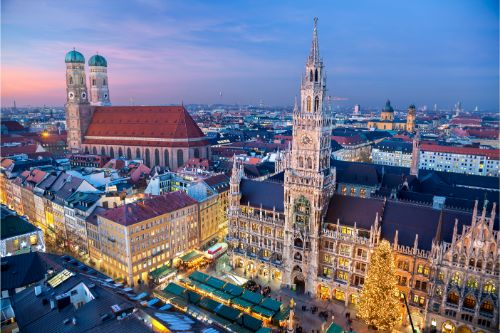
The Germans explain the Bavarian paradox as ‘Laptop and Lederhosen.’ This addresses the dichotomy of cultural conservation and the modern, business injection that has lent hand to the powerhouse of the European economy. Munich is not only the capital and centerpiece for Bavaria but also as a display of the starkest contrast between business and conservation. Cashmere-clad Schickies (yuppies) love it for their tongue-in-cheek claim of being the ‘northernmost city in Italy.’ One cannot write a Germany Regional Travel Guide without including Munich.
However, it is likewise known as the beer- and sausage-obsessed Milliondorf (village of a million people). Outside the city of Munich, are the urban and industrial heartlands of Bavarian Swabia and Upper Bavaria, which, took, have similar contrast. Both these areas provide preserved, historic towns neighboring manufacturing plants and industries. The area is mountainless, and while the historic towns have cultural relevance in their small ways, it is far from the popularized image for which Bavaria is known.
Munich is known for its urban delights. It is the capital of Napoleon’s Duchy, which he brought into kingdom-hood, with cultural clout and airs to back up its historic and now-passed status. West of Munich is the Swabian city of Augsburg, whose older claim to splendor is still seen as a mark of its day: the Renaissance. To the north, industrialized Ingolstadt known as the manufacturing location for Audi keeps its production value balanced with its historic significance and respect.
But it isn’t only the larger towns who are known and respected for their past accomplishments, but also smaller towns such as the quaint town of Neuburg an der Donau, all the way to the small religious city of Eichstätt. However, if a natural wonder is desired, look no further than south of Munich, whose lakes of the Fünf-Seen-Land give way to the trailing Alps on the horizon. Though even in this countryside, Lansberg and Lech allow for the urban-dweller to enjoy both city and mountainside.
There is little difficulty in navigating the more populated parts of Bavaria. Munich’s suburban railway extends into the countryside and to other more populated centers, which are likewise linked by its famous Autobahn. Munich’s airport seconded only to Frankfurt’s airport as Germany’s busiest connection provides easy access to and from the region. However, the paradox still persists between conservation and industry. The airport was named after the postwar reactionary politician, the Bavarian leader of the conservative Christian Social Union (CSU) party, Franz Josef Strauss.
CENTRAL BAVARIA
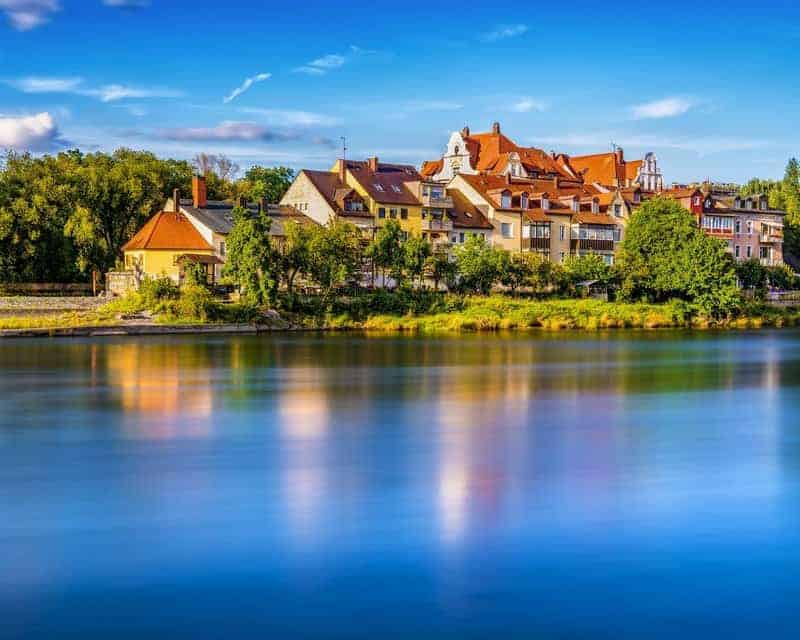
To the non-local, the mental images of Bavaria are an accumulation of the southern region of Munich, where ‘Mad’ King Ludwig’s palaces perch against the dramatic scenery of the alpine setting. Domed church towers rise above lush meadows and sapphire lakes hedge dark forests and the glistening snow-capped peaks of the Bavarian Alps. The village lends to the character, providing picturesque destinations, and the traditional Tracht can be seen as the norm. In both political and social ways, Bavaria holds Catholicism as its compass, creating a conservative outlook. However, the vast number of visitors create a cosmopolitan shine to the whole, especially in such resorts as Füssen or Germany’s highest and most known ski resort, Garmisch-Partenkirchen.
However, the eastern part of Bavaria would struggle to be more different. Rather than the defining features of mountains, it is defined by one of the greatest cultural and trading hubs of Central Europe: the River Danube. Its imperial-free city of Regensburg and the prince-bishopric of Passau bring with it the legacies of Rome and is heavily influenced by Italy in all its grace. Despite the Italian influence, local modest towns such as Straubing and Landshut have their own architectural significances from their own hay days. It isn’t until the land reaches the border of the Czech Republic that the natural grandeurs triumph again over the cultural wonders in the sparsely populated forests of the Bayerischer Wald (otherwise known as the Bavarian Forest).
Travel through the area is easy. All Regensburg, Passau, Garmisch-Partenkirchen, and the Berchtesgadener Land are linked via the Autobahn network. Outside of driving, the railways connect Munich and other towns to the Alps all the way to Füssen, Garmisch-Partenkirchen, and Berchtesgaden. At the end of each train line is a bus line ready to pick up the slack, linking the most notable tourist sites frequently.
THE BLACK FOREST

The Black Forest is most remembered for its influence and setting of the Grimm brothers’ fairytales. However, there are other reasons it is included in the Germany Regional Travel Guide.
In this modern-day, it continues to leave reality to the imagination, being known with supplemental cuckoo clocks, cherry gateaux, fantastically traditional wearables, wooden farmhouses, and rolling hills of evergreen forestation. Upon delving into the region, the character is further revealed, pulling on the influence of the state of Baden-Württemburg, and its synched inspiration from the disputed borderlands between France, Germany, and Switzerland.
Since the time of the Romans, the rounded series of granite summates which mirrors France’s Vosges on the western side of the Rhine Valley, have also acted as a border. Historically, the Romans found this harsh region to be impenetrable, thus making it a difficult region to populate, yielding in the view that it was ‘backward.’ However, the Black Forest gained its economical foothold for its lumber production, and the prevalence of the forest gave way to woodworking commerce.
Thus, the cuckoo clock industry sprang forward. It was seen as an industry of precise engineering, followed by musical instruments. This further fed the economic growth, though the region’s bread and butter remained tourism, a constant year-round due to skiing and spa facilities. Thus, while this region might have once been difficult to access, it is no longer the lonely region buried in evergreens. However, escaping the crowded hotspots is easy enough especially if your interests lie in walking, hiking, or cycling.
The Black Forest isn’t the expanse that one might think. Its reach is only about 150km long to 50km wide, thus making it an easy explore in a weekend getaway in a car. However, a car venture might miss the true colors of the Black Forest: a rich culture of tradition and expansive nature.
The area is dotted with dozens of beautiful, lulled towns and villages which e for a delightful tour. The best place to make a base is either of the two largest towns: the 19th-century spa town in the north, Baden-Baden, or Wildbad, known for its famous ‘drives’ such as the Schwarzwaldhochstrasse or Badische Weinstrasse which wind through the foothills to wine country. Each of these ‘drives’ will take the wanderer through the Kinzig Valley which is considered the most traditional Black Forest area along with the Gutach Valley.
Traveling south, one can find the exciting university town of Freiburg. These usually sunny, narrow streets create a handy and fun base for the exploration of the south side of the Black Forest. The rounded peaks such as the Feldberg (topping at 1493m) include minor ski and lake resorts and give way to deep valleys.
RHINELAND-PALATINATE and SAARLAND
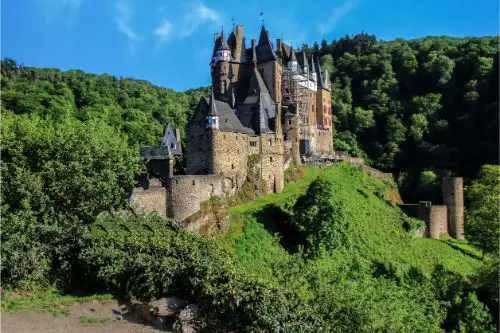
The Rhine and those like it have proven themselves to be the most influential hand in the shaping of both the Rhineland-Palatinate (Rheinland-Pfalz) and the Saarland. These states are both quite rural and remote for the majority of the region, they provide three main waterways: the Rhine, Mosel, and Saar. Each of these waterways has provided fruitful for traffic and commerce.
The Rhine and Mosel have been strategically developed with fortifications and towns since the time of the Romans, to protect its invaluable trading routes. Throughout history, many have been destroyed time and time again, only to be rebuilt in reclamation for the land. This was particularly so with the French, who have held most of the region at one time or another, leaving their imprint on the local cuisine and culture. Along all three rivers, viticulture is of high importance, placing the wines of the region at the top of international contenders.
The Rhine river curves and winds across the plain, to the eastern border of the region, to the first significant stops: a trio of cathedral cities. The further downstream you meander, the grander the cathedrals become, showing the Speyer, Worms, and Mainz for theological, architectural, and cultural enjoyment.
Moving beyond the cathedrals and to the west, the Rhine moves by the foothills of the Taunus mountains, in which is the Rheingau wine country wrapped around the popular tourist destination of Rüdesheim. A further 40m west of Mainz, the Rhine carves through its masterpiece, the Rhine Gorge, often called the Romantic Rhine for its display of fairytale castles eluding to ancient times (despite the castles having been built mostly by 18th-century aristocrats).
The final leg of the Rhine runs for 65km, ending in the semi-industrial city of Koblenz, where its sprawl meets the Mosel on the tail end of its journey down from the southwest. The scenic aspects of the Mosel Valley have been nicknamed the Mosel Weinstrass, as it is like a miniature Romantic Rhine experience with furthermore castles, wine, and leisure meandering river delight through wooded old towns. The expanse is more intimate than the true Romantic Rhine, and thus the towns are slower-paced and less industrious.
Traveling south along the Mosel, the slopes of the valley fade as the river approaches the border of Luxembourg and the city of Trier, overflowing with Roman history and ruins. Further south yet, the River Mosel joins with the Saar, leaving behind castles and wines to enter into the 20th century, into one of Europe’s leading industrial regions. But even this is but a memory, as the majority of it is now closed, and in decay. However, the Völklinger Hütte ironworks acts as a snapshot of the before times and thus preserved to reflect this essence. With a big city nearby, Saarbrücken provides museums and some international flair with the French border not so far off.
Getting around is easy enough, as the trains and the roads follow the rivers through the region, and cut between each city. While the main roads are easy to navigate, there is more to see off the beaten track, especially if you’re a cyclist. These tracks are marked for the road cyclist in mind. However, if that’s outside your comfort level, you can always take one of the many boats that cruise along the Rhine and Mosel, taking your bike that you may or may not have with you.
HESSE
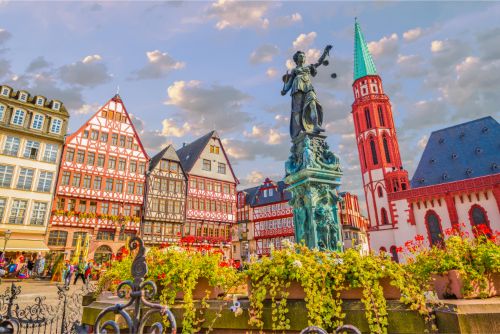
Because of Frankfurt and its international airport, many arriving visitors experience Hesse before anywhere else in Germany. One might even find themselves a little disenchanted at the sight of Frankfurt as they journey inward due to its modernity harnessing an architectural world of steel and glass, especially when the traveler had visions of fairytale structures. However, the modern development of Frankfurt is beautiful to those who seek this metropolitan experience. And for those seeking the Hansel and Gretel Germany, they won’t be disappointed as the city fades into the classic depiction of a historic and iconic Germany town. A good reason for including Hesse in the Germany Regional Travel Guide.
But it isn’t simply aesthetics that that can please the visitor, but the historic landmarks and effigies of German figures who either name Hesse as their birthplace, or made their homes in here later in life. These figures include Goethe in Frankfurt, the English bishop St. Boniface, who was ordained in Fritzlar and Fulda the patron saint of Germany, and the brothers Grimm in Marburg and Kassel. While the greats are monumented, there are further reminders of a more troubled history, of the complexity of the British royal family’s relationship with Germany, found in Darmstadt.
The freshness of Hesse was developed as a result of the American occupying the region after World War II. During this time, the region had joined with the Prussian province, Hesse-Nassau, which was made up of the Electorate of Hesse-Kassel (a comic-opera statelet of Hesse-Homburg and the Duchy of Nassau) and the former Grand Duchy of Hesse-Darmstadt.
This history is no doubt complex and a little boggling; however, this accounts for the richness and range of the Hesse attractions. With Frankfurt leading the way for metropolitan lovers alike as the Eurozone’s financial capital, it also provides ample museums dedicated to literary, imperial and Jewish honors and reminders. To the south, Darmstadt’s laid-back pace is a must for fans of Jugendstil and makes for a pleasant base if one’s itinerary includes a brace of UNESCO World Heritage sites such as the Messel fossil site and the Lorsch Monastery. But if it’s pure relaxation that you want, the spa-towns of Wiesbaden and Bad Homberg are the ideal getaway from the business of Frankfurt in the area.
Hesse provides a perfect archetypal German experience, located away from the Rhine-Main region, and tumultuous with rolling forests atop hills stretching to almost mountain heights in Taunus and Rhön.
The towns are mostly smaller with the exception of Frankfurt, which makes up the fifth largest city in Germany. And this cluster of picturesque cathedral towns such as Fritzlar, Limburg, Wetzlar der Lahn, as well as the former prince-bishopric of Fulda or the university town of Marburg, make for a worthy exploration for any visitor of Germany. Despite the petit size of these towns, even smaller yetis the ducal seat of Weilburg. Venturing north, Kassel draws those with an artistic passion and appreciation for the Documenta Contemporary Art Fair and keeps the enthusiast there with Baroque gardens and exceptional museums.
NORTH RHINE-WESTPHALIA
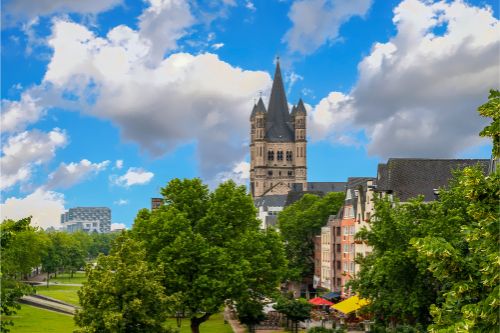
With a population topping the 18 million in the neighboring Netherlands, North Rhine-Westphalia (Nordrhein-Westfalen) is the densest population in Germany, though geographically is by no means the largest. It poses an artificial construction, a result of the British occupation after World War II which pieced together two Prussian provinces: Rhineland and Westphalia. While its size is admirable, and it holds a quality economic stature, it lacks the regional, heart-hitting patriotism that one might experience around Bavaria. That isn’t to say that there are no loyalties at all, but rather, that they are more inward and locally set, to Cologne (the region’s greatest city) or to the region, as seen in Ruhrgebiet, which stretches across the boundary between Rhineland and Westphalia.
This area has been occupied multiple times by the French and the British as a result of the Charlemagne capital, Aachen at the western tip of the region. North Rhine-Westphalia looks outward and is minded by the rest of Europe as several of the cities have been essential in the history of Europe. Northward, the cathedral city, Münster, provided the location in which the Treaty of Westphalia was signed, the result of which ended the Thirty Years’ War. In the south, Bonn, now known as a university city and the historic birthplace of a classical musician, Beethoven, was known more recently as the capital of West Germany during the Cold War. While aesthetically, it lacked the forceful lurch of the mountains found in Germany’s south, North Rhine-Westphalia contains its own version of scenic beauty coursing doing the Rhine in the Siebengebirge and into the arboreal Sauerland.
While the wilds of the countryside attract some, the urban attractions are captivating in themselves, especially in the cosmopolitan Cologne and chi-chi Düsseldorf—it’s neighboring and near rival to the land’s capital. The Ruhr conurbation cluster which is increasingly more and more innovatively industrious, Duisburg, Essen, and Dortmund, provides their own charm nevertheless. Traveling further, and known for a classic wholesomeness of ham and pumpernickel provisions, the towns of Westphalian such as Soest, Paderborn, Detmold, and Lemgo differ greatly to Rurh. In the Lower Rhine, about Kalkar and Xanten, the neighboring Netherlands’ influence can be found in the architecture and location names.
Transportation is never an issue in this region. There are three major airports to accommodate the area: Cologn-Bonn, Düsseldorf, and Dortmund. Each one is a well-connected international landing spot from which an intricate but easy-to-navigate web of public transports attaches. If the center of the region is your desire, then the train lines are most beneficial, as well as the U-Bahn and bus. However, if you’re more self-motivated for transport, the North Rhine-Westphalia is equipped with Rhadstations in many train stations, and is quite bicycle-conscious with their sign-posting for cycling paths in the countryside, making it one of the easiest places for the cyclist to explore in Germany.
LOWER SAXONY and BREMEN
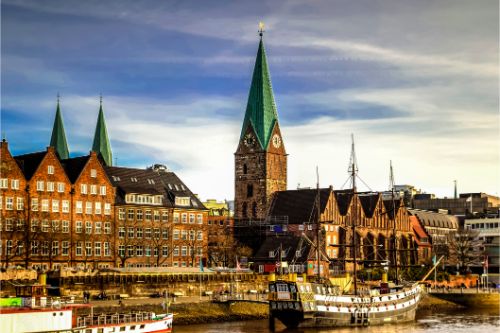
There’s a reason that not many visitors think of Lower Saxony, or even know anything of it when it comes to planning their trip to Germany. The area lacks a defining city and landscape to the area, and thus, might be left untouched on the itinerary. However, it is worth noting that this is the second largest region in Germany following Bavaria, acting as a neutral area as it shares the most boarders of any of the other states. The region is compiled of the waving mountains which settle into rippling hills leading to the calm plains of the Dutch border.
In an architectural sense, there is a middle ground that transitions from the partially logged countryside to a red-bricked coast. One could argue that its mutability comes down to its relative youth, having only come into being in 1946 when the British military redrew the map to create and include Niedersachsen (as the Germans call it).
However, don’t let its youth fool you. Its roots run deep. Though this state actually is north rather than south of Saxony, the ‘Lower’ aspect of the name is a throwback of the Saxon tribe who once populated the region before Germany came into existence. It was the Saxon duke, Heinrich der Löwe, or Henry the Lion, of the 12th century that garnished the name of ‘Lower’ Saxony. The state might have omitted the adjective had his reign not resulted in the migration of the Saxon powerbase up the Elbe, leading to the currently named, description-free state, of Saxony.
The keyword in this region, if not metropolitan or aesthetics, is diversity. This region is known for eclectic attractions and scenery which transform brooding highlands in the Harz through the surging Lüneburg Heath and to the saline aroma and mudflats of the coast of the North Sea. While few populate Lower Saxony, the most urban area is to the east where the state’s capital, Hannover, resides. Hannover acts as the hub of both vivacity and transport in the region, though it remains relatively slow, with only half a million residents. The runner-up urban center is Braunschweig, which encapsulates the effigy of Henry the Lion from his era, relishing the location as his original power base.
Despite the populated and industrial nature of the eastern part of the state, it is still difficult to categorize. Braunschweig is central to distinct visitation spots such as Wolfsburg and Volkswagen—each with definitively modern twists and influence—and the formal ducal town, immersed in a daydreaming lull of Wolfenbüttel. Each of these destinations lay just a half an hour from Braunschweig. However, if delving into the historic towns of Lower Saxony, then Wolfenbüttel makes for an optimal starting point. Further towns rich in reminders and monuments of the past are scattered throughout the state, such as the UNESCO-listed provincial town of Hildesheim, or Celle whose fairytale, partially timbered Altstadt marks a stark contrast from the modern though nonetheless pretty, red-brick Lüneburg.
Hameln, home of the Pied Piper, creates its own authenticity in an Altstadt defined by Weser Renaissance-styles and rolling countryside. The Weserbergland swoops southward along what is quaintly dubbed the Fairytale Road, making for a popular cycling and canoeing route, traveling along partially wooded towns like Hann. Müden, a worthy stopping point along the trek to Göttingen, is a university town that provides a jolt of excitement to keep the region from being completely sleepy in this sunny, small town.
To the northwest of the state, and near the intrusion of the North Rhine-Westphalia, on the flatlands is Osnabrück, the acting hub of the western portion of Lower Saxony. Its peace-broking history is the leading contribution to its label as the happiest city in Germany. Further north of Osnabrück might not be of particular interest for those looking for scenic routes, though it is less populated. This area includes East Frisia (Ostfriesland), which is heavily influenced by Holland in its dialect, Plattdeutsch, and goes so far as to mimic its scenery. However, there is a reason to travel this far north in Lower Saxony, and that reason is Bremen. This former maritime power is the home of the North Sea port, Bremerhaven, and thus acts as its own representation of a state with its fiercely prideful independence.
HAMBURG and SCHLESWIG-HOLSTEIN
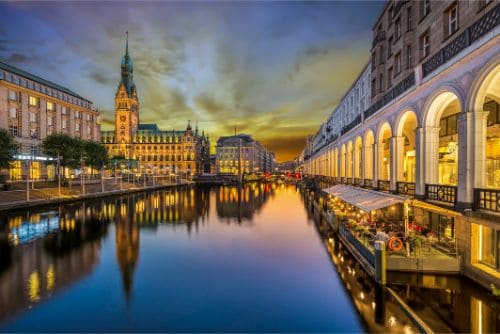
Schleswig-Holstein is defined and divided by its directions. To the east and west are the North and Baltic Seas, respectively. To the north is Denmark. It is easy to say that Schleswig-Holstein is a product of its surroundings. The seas to the east and west of the area are compiled of beaches and marram grass dunes, picturesque lighthouses, commercial ports, and unpredictable weather. As the region creeps toward the north toward Denmark, the Nordic feel of the bordering country creeps in to meet it.
There is Scandinavian liberalism that rocks Schleswig-Holstein’s and the neighboring city-state of Hamburg’s boat stand out far more than that of the southern states. The locals might even go so far as to bequeath the name of ‘Prudence’ unto those residing to the south, despite their already liberal ways. Schleswig-Holstein holds so much to its own that it might even be considered its own country in nature, with a local diet relying mostly on fish and their local dialect similar to Dutch, Plattdeutsch, that gives other Germans a run for their money in comparison.
Like many European countries and regions, it is its historic background that created its culture. The Dutch had reigned over the peninsula between the 15th century through to the mid-18th when ripples of nationalism called for independence. The curiosity of Schleswig-Holstein put many a mind to the test to figure the region out. Lord Palmerston, a British prime minister mused, ‘The Schleswig-Holstein Question is so complicated only three men in Europe have ever understood it. The first was Prince Albert, and he is dead; the second is a German professor, and he is in an asylum, and the third was myself, and I have forgotten it.’
The modern Schleswig-Holstein doesn’t hold as much weight in politics these days. The state capital, Kiel, is little more than a working port with little urban development with its Baltic coast notched by fjords. The coast to the west wild with winds whisking through, combing through the color wash sky that has been the draw of artists such as Emil Nolde. The once city-state, Lübeck, carries its culture with ease, continuing on complex and rich tales and stories such as those from local writer, Thomas Mann. However, it’s lure and appeal is simple: a culture deeply rooted and a heritage handed down for more than four hundred years as the head of the first pan-European superpower in the area, from the medieval trading-cartel, the Hanseatic League.
Hamburg and Lübeck are the heavy-weights of the area, however, once you move past them as well as the industrial Kiel, Schleswig-Holstein makes itself known as a brilliant countryside for holiday-makers. Ensure you have personal transport, you could happily spend a week weaving through the small towns where the coast kisses the country, such as the rural Eutin nestled in the residue of the Holsteinische Schweiz hills (Holstein’s Switzerland), or the once stronghold of the Vikings, Schleswig, which has now become a sleepy home of an eclectic myriad of museums.
White beaches fine sands push the North Frisian islands from the west coast to create indulgent holiday hotspots (though foreigners generally make their way further south). Watching the world go by in Sylt (something akin to what one might call the German Hamptons), or lazing about Strandkörbe wicker chairs in Föhr and Amrum, the quiet sister islands, known for walks, bike rides, and sandcastles on the beach, is a quintessential part of experiencing the German coast.
As mentioned before, Hamburg could easily be considered a state in its own right, and even this bustling city finds time for beach bars during the warmer months of April through September and extending a nightlife year-round. Its galleries and museums are some of the finest bar none and are in themselves, worth a visit. For the traveler without personal transport, you will have no problems getting through this city.
However, to extend beyond can be tricky, as the rail links from Lübeck to coastal towns on the east coast as far as Kiel. However, on the west coast, a ferry service does allow for island-hopping along the three North Frisian islands, which can make for a delightful beach holiday in itself.
MECKLENBURG-WESTERN POMERANIA
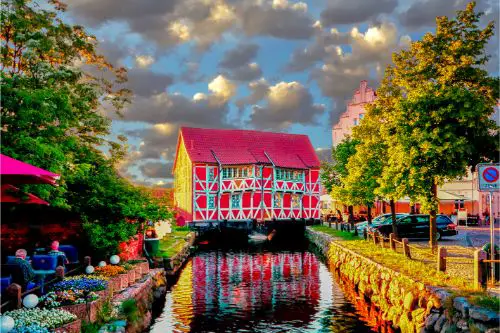
Spanning just over 23,000 square kilometers, there is no other region in Germany that is so sparsely populated as Mecklenburg-Western Pomerania (Mecklenburg-Vorpommeron). This region, pressed into Poland, features a tower block as a representation of the conjoined former duchies of Mecklenburg West and Pomerania. Under the GDR its development was minimal, which might have been so as it was without any city whose name carried any weight.
As a result, there are few foreigners who made the trek to Mecklenburg-Western Pomerania. However, with the reunification, this spot has been growing in popularity due to the beaches that make up Germany’s longest coastline which runs 354km from the Trave River in Lübeck to Usedom all the way to the border. So much so has this region gained in notoriety, that the 2007 G8 summit was held in the Heiligendamm hotel and resort.
It wasn’t too long ago that the two largest German islands, Rügen and Usedom were the place to be for German glitterati in the 1800s. These were the rich elite, the socialites of their time compiled of dukes and the occasional Kaiser was known to pause to paddle in the exclusive saltwater bathing resorts. With the economy taking a turn for the better after such long neglect under the GDR, the quality of the resorts jumped in stature. Rügen has taken its stand as one of the most sought destinations in the country for holidaymakers, with calk-white cliffs leering over the Baltic Sea and its Bäderarchitektur (a fine coastal form of architecture).
The German Baltic coastline itself represents true Hanseatic League country, with the gothic style red and black brick buildings known as Backsteingotik architecture found in the UNESCO-listed Altstadts in Wismar and Stralsund. These areas are monuments of its former glory of the medieval market town. Rostock also holds some heritage, as it’s marked the region’s largest city as well as the main port. However, it’s most well known and visited for its late-night and bar scene, the strand at Warnemünde, or as a base place for a Münster in Bad Doberan. The latter acts as a drawing interest for many of the architecturally enthused.
The coast doesn’t hold all the glory. In fact, the arrow-straight tree-lined roads lead the traveler through glowing yellow rapeseed fields in the early summer and offer an escape for anyone just looking to be removed from the radar. So much so, that this has historically been a favored retreat for Prussian aristocrats seeking a relaxing refuge from Berlin, and their manners are open today in the form of hotels.
The heart of the region is the Mecklenburg Lake District, or as the locals know it, Mecklenburgische Seenplatte. The lake district within the Müritz National Park features the largest freshwater lake in Germany, Lake Müritz. While this might be the featured attraction, this is has been dubbed the Land of a Thousand Lakes, and is known as the largest contiguous area of waterways in central Europe.
The dotted lakes make for a wealth of outdoor activity for canoeists, birdwatchers, and naturalists alike. Once the seat of a duke, Schwerin took up the position of the state capital, perhaps because it’s the largest town in this particular area. However, despite being the largest town around, it’s still pint-sized, and packs a cultural wallop backed up by the fantastical castle. Güstrow, however, another once seat of dukes, is now a memorial of Ernst Barlach, Germany’s greatest expressionist sculptor.
Now that you have learned more about the different Regions of Germany, what’s next?
Check out The Ultimate Scotland Travel Guide
| GOVERNMENT LINKS |
| General Information VISAS Events and/or Holidays Wheelchair Accessible Attractions |
